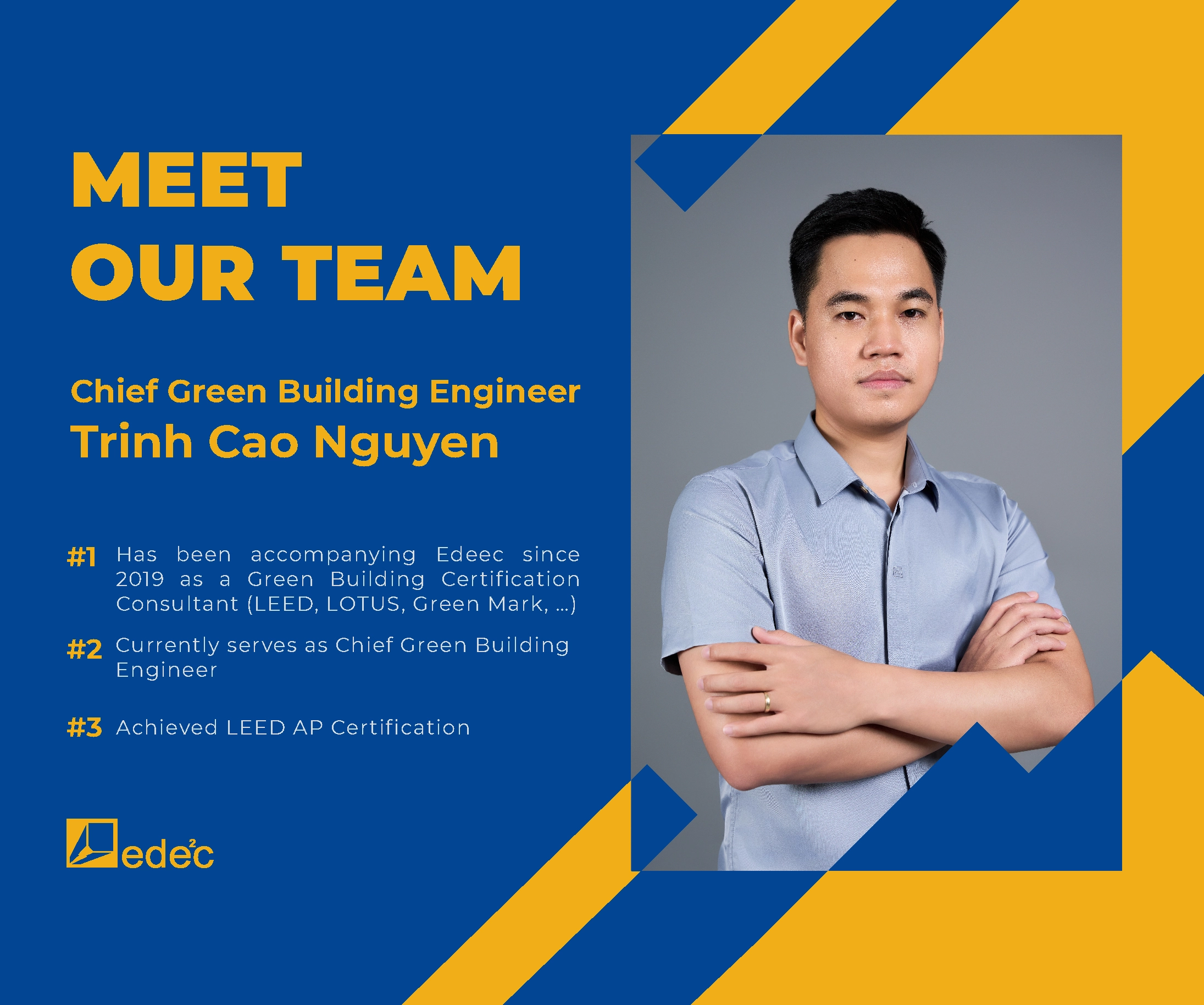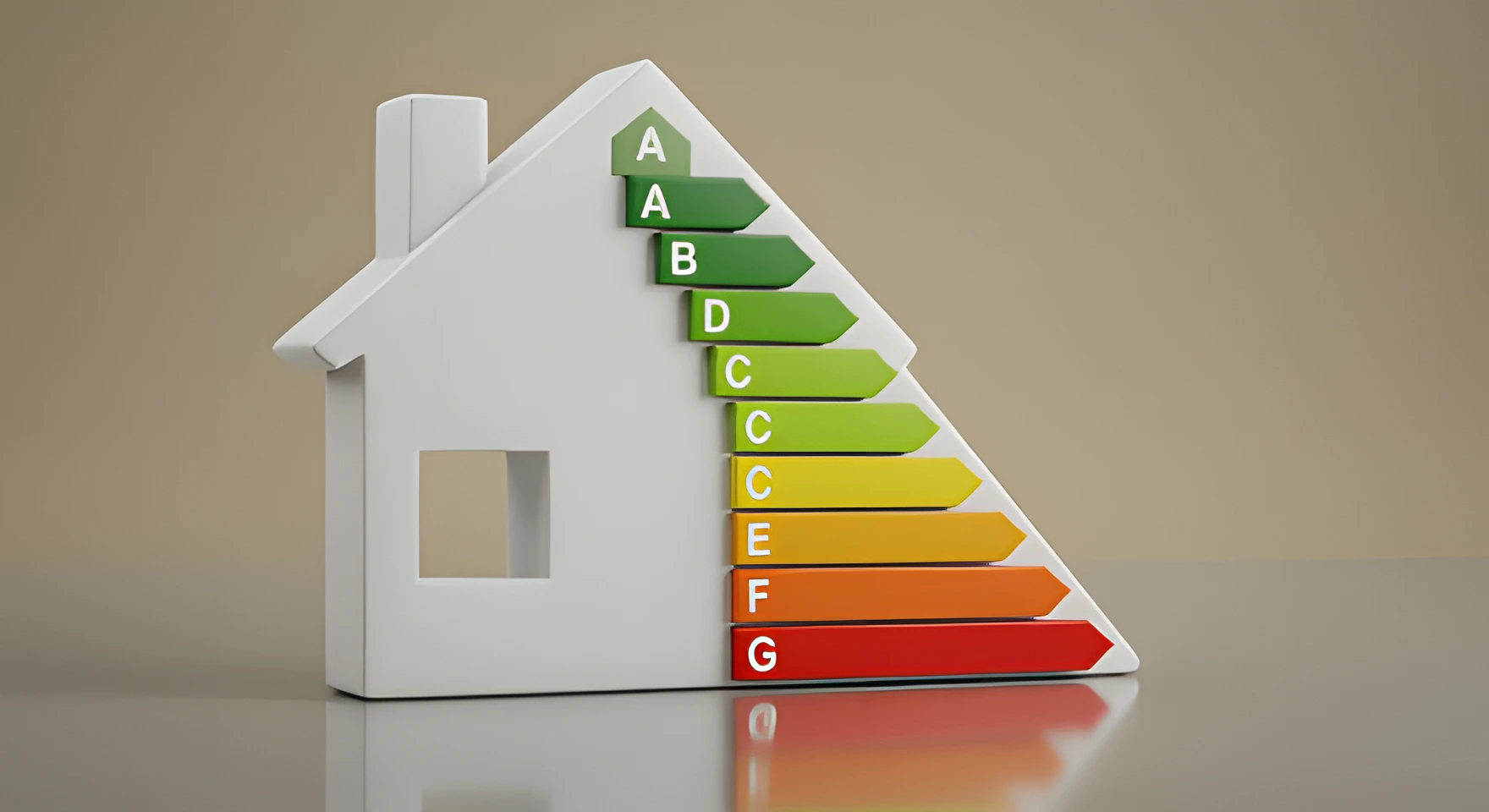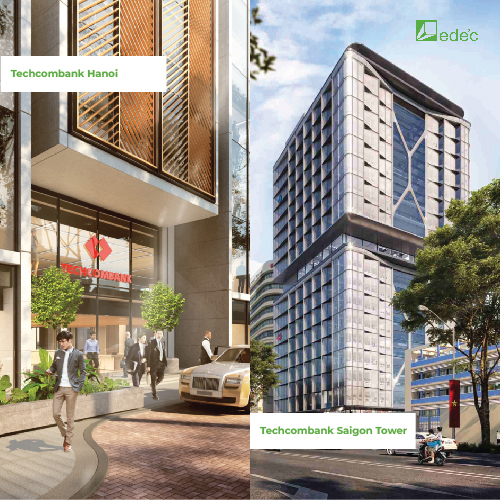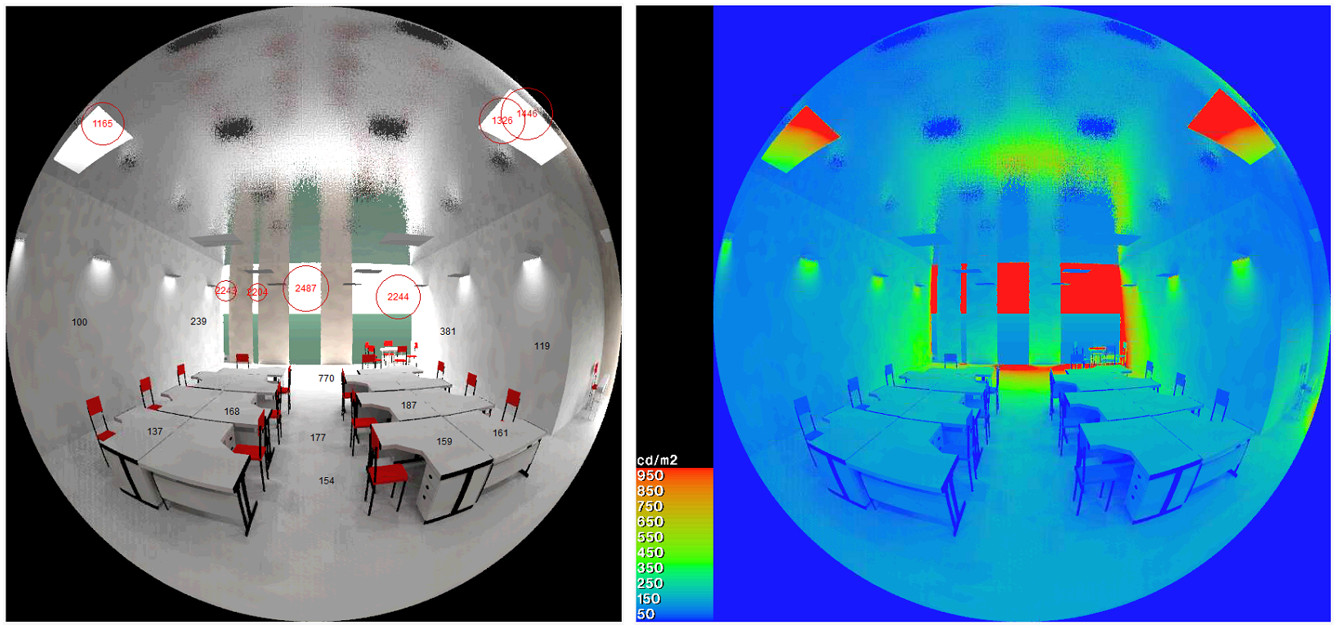RESOURCES
(Part 1) The integrated design process, application of energy simulation technology

Presentation by Mr. Architect Tran Thanh Vu – Director of EDEEC Co., Ltd
1. INTRODUCTION TO EDEEC CO., LTD.
- The first unit in Vietnam operating under the model of energy efficiency consulting company (Bureau d’Etude Technique);
- Established in 2011 by a team consisting mostly of architects, and engineers majoring in architecture, and energy who have graduated and worked in developed countries;
- Enthusiastic team eager to bring knowledge and experience from developed countries and from ODA projects on energy efficiency to apply to projects in Vietnam.
A number of key members were quiet for more than 10 years in projects related to energy efficiency and green buildings, such as the IFC building energy regulation revision project – International Finance Corporation funded by the World Bank Group, the “Vietnam Clean Energy Program – VCEP” funded by USAID, and the UNDP energy regulation program and Ministry of Construction. In the past few years, the technical team that has participated in the project mentioned above decided to increase their activities in order to promote positive changes to Vietnam’s works. By applying advanced research results to non-governmental projects, operating under the legal structure of EDEEC, with a focus on energy efficiency, optimal design in architecture, and energy engineering for better-than-average returns on investment. Even energy-saving and green buildings can reduce initial investment costs thanks to intensive optimization calculations.
To achieve the above goal, the building energy solution team proposes the application of an integrated design process, combined with energy simulation technology to optimize the design process and investment delivery.
EDEEC Company performs the following core consulting services for construction works, based on energy simulation technology operated on an integrated design process.
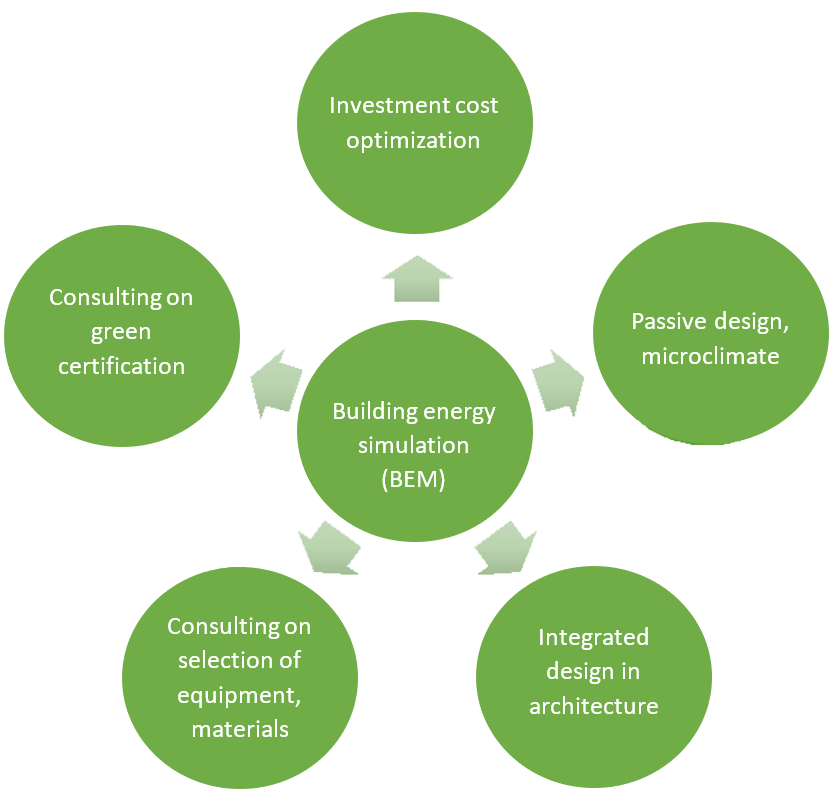
Contact:
- Address: 8th floor, CT3 Yen Hoa building, lane 6 Duong Dinh Nghe, Cau Giay, Hanoi, Vietnam
- Email: info@edeec.com
- Phone: +84 904861128 (Mr. Tran Thanh Vu – Company Director)
2. SUMMARY OF ENERGY SIMULATION
Design solutions and technology, energy efficiency techniques for buildings in Vietnam: Building energy simulation to support architectural design.

What is the building energy model?
An energy model is a computational model that takes input parameters such as geographic data, weather, building geometry, system performance characteristics, and user operational data to provide output information such as energy consumption of the whole building or requirements for ventilation, cooling, heating… including information on thermal comfort, temperature, humidity, lighting, luminance, etc., to find the most suitable design solution.
Thus, energy simulation is just a name. In essence, this is the job of digitalizing the entire actual operation of the building to predict all problems related to the air environment, natural lighting, energy systems such as lights, equipment, the entire air conditioning system, and operating costs of the building…

Energy simulation 3D model has enough space inside
In contrast to the architect’s 3D perspective drawing model where the architect only draws the building shell, the energy model requires that the 3D model includes all internal spaces, the number of people, lights, equipment, and properties of the material.

The material parameters of the building need to be fully and accurately given for each wall, roof, window

Typical office schedule
The graph above shows the percentage of people occupying office space for a typical working day. On the vertical axis it shows the percentage of people, and on the horizontal one it displays the hours of the day 0-24h.

Weather parameters, the most significant input data
The weather forecast of 8760 hours (365×24) represents the climate of the site. This is the most important data when designing buildings with simulation engineering applications. The commonly-used design data in Vietnam only use the maximum parameters of temperature and humidity to simply calculate the capacity of the air conditioning system, so the detailed impacts of climate and especially the energy consumption of the building will not be assessed during the design process.

The model of the ventilation and air conditioning system is also created directly in the energy model. This system requires deep expertise and understanding of building energy engineering, control techniques, and programming for accurate description.

The simulated air conditioning system model will interact with the entire building, weather, lights, equipment, etc., all virtual interactions in the computer simulation environment and produce building operating data such as temperature, humidity for each space, and power consumption on the air conditioning system, lighting…
The application of energy simulation in architectural design is a completely novel concept in Vietnam. In contrast with conventional design processes, energy simulation combined with the integrated design process will actively participate in all key phases of design. This includes concept design, design engineering development, and even sketch design.
Some examples of using energy simulation for detailed calculation of building operations:

Graph of project power consumption forecast on 3 main electricity-using items (calculated for 1 year)

Forecast of natural ventilation flow on the roof of a building

Forecast of temperature (red) and CO2 concentration (gray) in a classroom with and without natural ventilation. Outside temperature (blue) in April and July.
3. COMPARISON OF THE GENERAL DESIGN PROCESS AND INTEGRATED DESIGN PROCESS

General design process: After a period of working with the investor on the layout and perspective, the architect will proceed to sign the contract. Then preliminary and basic design development work will be done quickly (and using little of the engineer’s in-depth evaluation) so that construction permits can be quickly obtained. After obtaining a construction permit, technical development is carried out more deeply and cooperation between architects, engineers, and painters takes place.
The disadvantage of the classical approach is that the architect decides most of the design issues himself during the pre-contracting process and the preliminary design, and then based on that, the engineer will meet the next technical requirements. This approach, especially in the context of Vietnam, often generates plenty of problems for the energy use and environmental sustainability of the building. Generally, engineers are involved in the design at a later stage of the project. This is because the design has been emotionally determined, which often results in conflicts or errors that are difficult to resolve, particularly when it comes to energy efficiency and environmental sustainability. Error handling is usually remedial and tends to increase costs and prolong the design time.
Integrated design process: In the world today, designers implement an integrated design process to overcome the disadvantages of the classical process. The energy solution team of EDEEC has applied and implemented this integrated process effectively under Vietnamese conditions.
Integrated design requires the design to be done and optimized in every design phase, so architects need to work from the very beginning with a team of engineers. This is the first difference. A very important tool for implementing integrated design is energy simulation.

The units involved in the design process from the beginning

Loops to optimize design and cost, using data from energy simulations to calibrate and forecast operational metrics
Every design phase should be discussed and revised to find the optimal arrangement between professions. Energy, environmental, and structural engineers shall be involved from the very beginning with the architect. As a loop in the design, this process aims to optimize energy and environmental factors step by step.
The team of engineers will assist the chief architect in determining very early how the building will affect the environment, energy consumption, and operating costs, enabling timely adjustments.
In the integrated design process, energy simulation plays a key role in providing and predicting operating and costing data for the design team.

Compared with the classical design process, invisible but increasingly important issues such as environmental sustainability, energy, and costs are made clear from the outset. Innovative solutions in space design, engineering design, cost reduction, and energy use reduction are evaluated early, and options are finalized at the basic design stage. The professions combine and coordinate closely early, so errors and conflicts that easily arise at the technical development stage can be avoided.
At the technical design stage, the role of architects and engineers is no longer as important as in the classical design process. At this time, the drawer mainly performs detailed drawings and arranges pipelines, architects and engineers mainly play a supervisory role.
Accordingly, when comparing the two processes, the time spent on fixing errors and conflicts in the classical process often prolongs the design process. Those errors are difficult to eliminate. They require additional costs for remedial work or we must accept they remain in the building. Meanwhile, with the integrated design process, conflicts and errors are planned and coordinated from the beginning, so the technical implementation will minimize errors and avoid unexpected cost increases.

Comparison of the design time of 2 processes
To be continued…
Read more: Integrated design process applying energy simulation technology-Part 2

